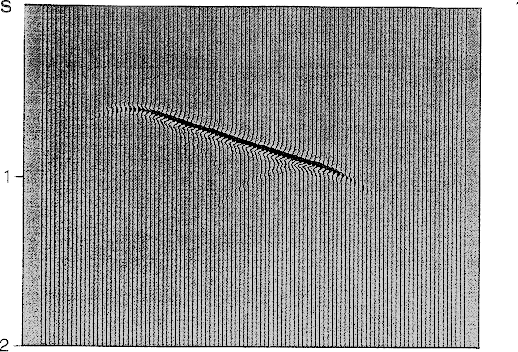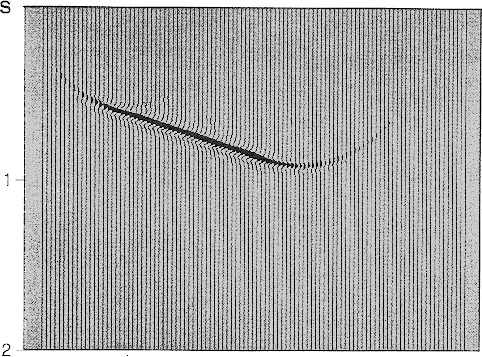 |
Figure 13 Undermigration of dipping reflector in Figure 6 (migration velocity, 20 percent lower than true medium velocity).
Figure 13 shows the result of migration using a velocity that is 20 percent lower than the true velocity. The reflector is only partly shifted updip and remains less steep than the true inclination of the model. Besides, diffraction events are still present at the edges.
Figure 14 shows the opposite effect on using a 20 percent higher migration velocity. Now the dipping reflector is overmigrated. It has in fact moved further updip than its true location, and the edges of the reflector are smeared. The edge effects now show up as ``smiles''.
 |
 |